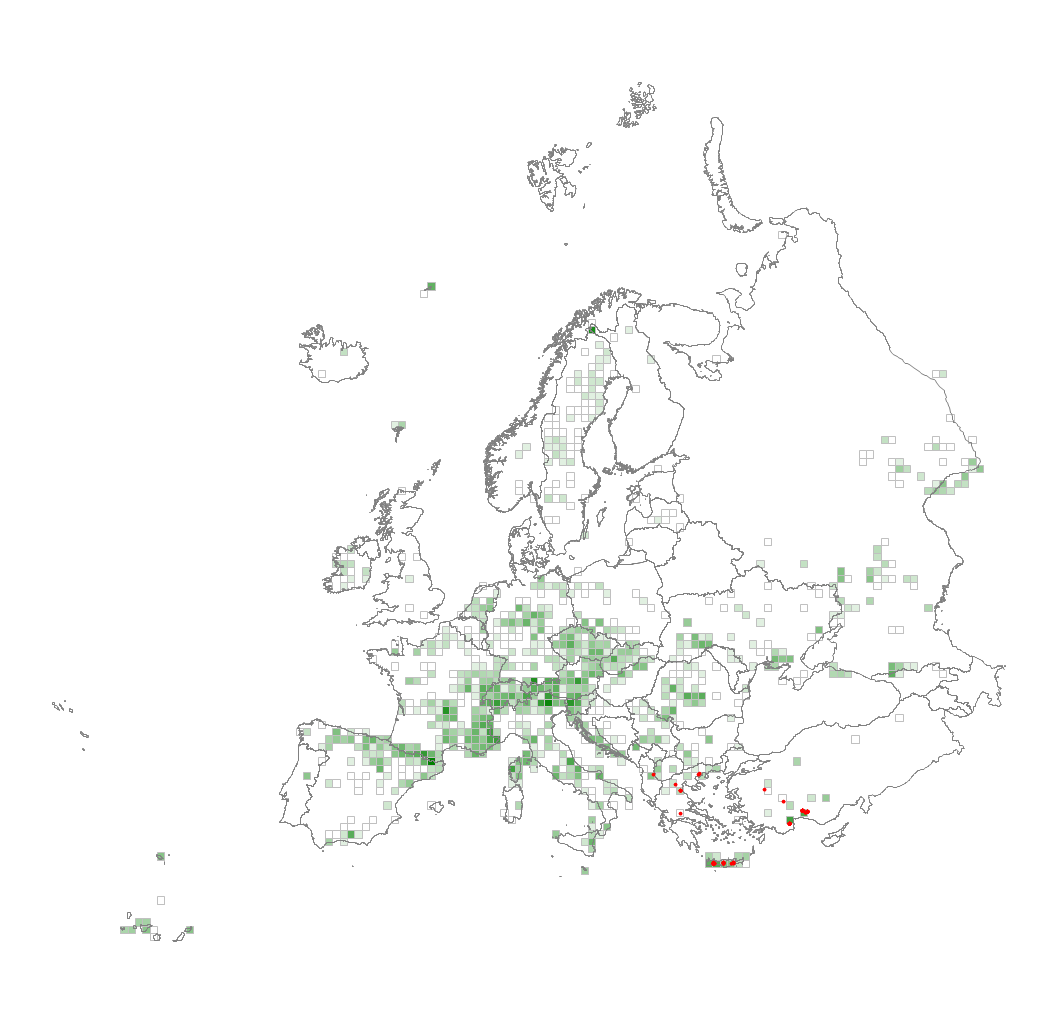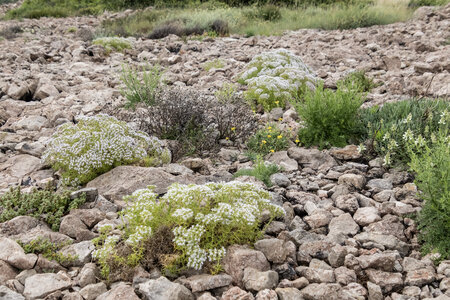U29 Eastern Mediterranean base-rich scree
Calcareous and ultrabasic screes, with talus, boulder fields, glacier forefields, rock debris and riverine gravel banks, from the lowlands upwards to subnival levels in the eastern Mediterranean. Apart from epilithic bryophytes and lichens on rock outcrops and stable boulders, the vegetation consists mainly of specialist vascular plants adapted to the mobility of scree materials, the scarcity of fine-grained soil, mechanical disturbance, shortage of water and other physiological stresses. Towards the foothills and lowlands the habitat is rarer and more scattered but more prone to be affected by human disturbances, especially in terms of species composition. However, high mountain screes are usually well preserved, most within protected areas, and therefore in a very natural state.
Chytrý M., Tichý L., Hennekens S.M., Knollová I., Janssen J.A.M., Rodwell J.S. … Schaminée J.H.J. (2020) EUNIS Habitat Classification: expert system, characteristic species combinations and distribution maps of European habitats. Applied Vegetation Science 23: 648–675. https://doi.org/10.1111/avsc.12519
Version 2025-10-03, https://doi.org/10.5281/zenodo.16895007.
For the official presentation of the EUNIS Habitat Classification from the European Environment Agency, please see: EUNIS Terrestrial Habitat Classification 2021. The FloraVeg.EU presentation may show modifications and partial updates to the habitat classification.

1.jpg)
2.jpg)
3.jpg)
4.jpg)
